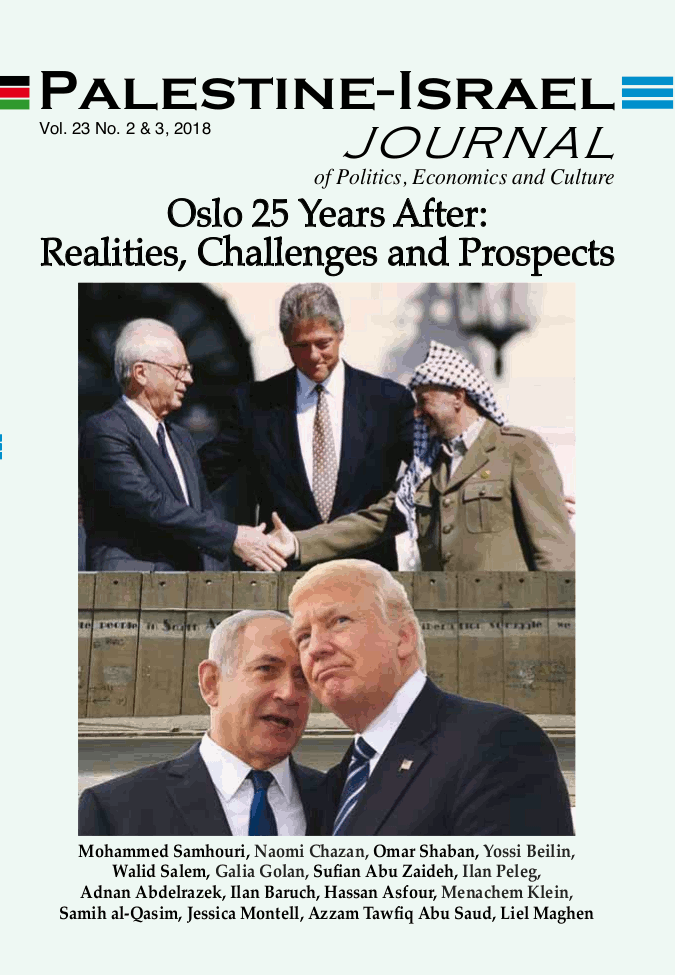I spent the summer of 1993 traveling across Canada and the United States with my husband and two young children. The PC was still in its infancy, and the smartphone hadn’t yet made its debut. In other words, news was not easily accessible from the wilds of Yosemite or the shores of Lake Louise in the Canadian Rockies, and so we made our way across North America happily oblivious to developments back home. That is, until we stopped at a roadside café in late July and saw a newspaper with a glaring headline about “Operation Accountability,” otherwise known as the Seven-Day War with Lebanon. Our hearts sank as we read about yet another round in the cycle of violence that marks the Israeli-Arab conflict.
We wound up our trip in New York in late August, and as I was packing our bags for the flight home my husband appeared in the doorway with a bag of bagels and a copy of the New York Times that reported that Israeli and Palestinian teams had been holding secret negotiations in Oslo. To say that we were awash with hope sounds like a cliché, but there really is no better way to describe the emotions that swept over us. Don’t forget, we were still reeling from former Prime Minister Yitzhak Shamir’s admission that his participation in the Madrid peace talks had been a sham and that his intention had been to drag the talks out for 10 years while entrenching Israel’s hold over the Occupied Palestinian Territories. And while we were happy to see the Likud defeated in the 1992 elections, the military background of incoming Prime Minister Yitzhak Rabin didn’t exactly paint him as a harbinger of peace. And so the news about the talks in Oslo seemed like the impossible had happened, and we returned home in a state of euphoria.
The Oslo Roller Coaster
The experience of the next two years was like living on a roller coaster. There was the tension leading up to and the relief that followed the Rabin- Arafat handshake and the thrill of watching the convoy carrying PLO Chairman Yasser Arafat into Gaza. We joyously watched as the Palestinian flag was hoisted over government buildings and as former members of Palestinian militias donned their blue uniforms and took over responsibility for law enforcement in the Palestinian Authority.
Incredulity slowly gave way to trust as the two sides proceeded to make the transition from enemies to partners. At the same time, there was the escalating terror that threatened the talks and the highs and lows that accompanied the cycle of suspension-mediation-resumption that plagued the negotiations. And then, on Nov. 4, 1995, an assassin’s bullet changed the course of history, and following Shimon Peres’s loss to Benjamin Netanyahu in the 1996 elections, the peace talks ground to a halt. Although there was a brief revival of hope after Ehud Barak defeated Netanyahu in 1999, the failure of the 2000 Camp David summit dealt the death blow to the Oslo process. After Camp David came the Bush Road Map, the Annapolis Conference, and U. S. Secretary of State John Kerry’s mission, but none of them came close to Oslo in the hope they inspired or the disappointment they left behind.
Things Change
Much has been written about why Oslo failed, and this brief personal history is not meant to account for everything that went wrong. My goal in sharing my memories of Oslo is just the opposite: to remind those who lived through it and to inform those who were not yet born of what went right. True, the Palestinians are still living under occupation 25 years later, and nothing can mitigate that egregious injustice. But those of us who remember when it was a crime for Israelis to talk to the PLO have a responsibility to share the history of those times with the younger generation in order to keep alive the belief that things change and encourage them to continue the struggle for a just and lasting peace. In these dark times, it is the memory of that morning in August 1993 that keeps me going.

